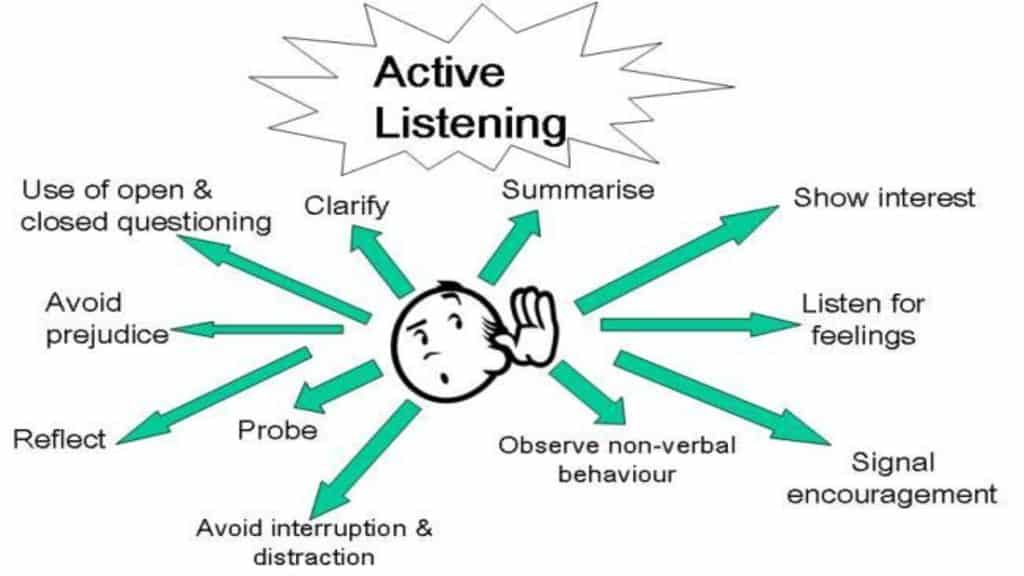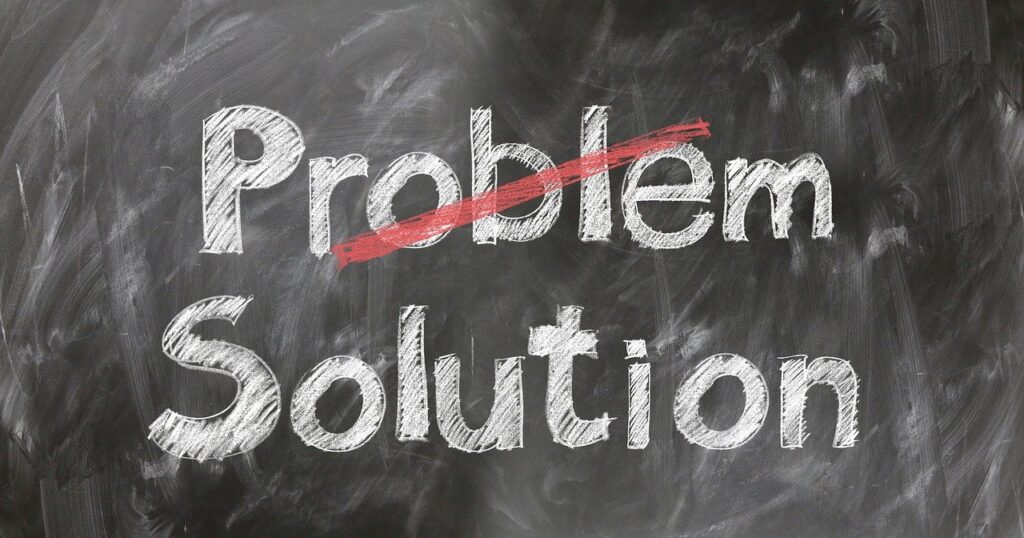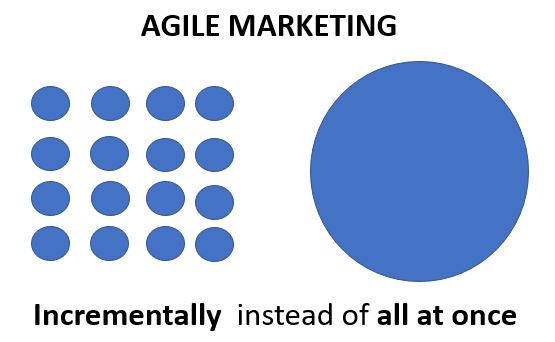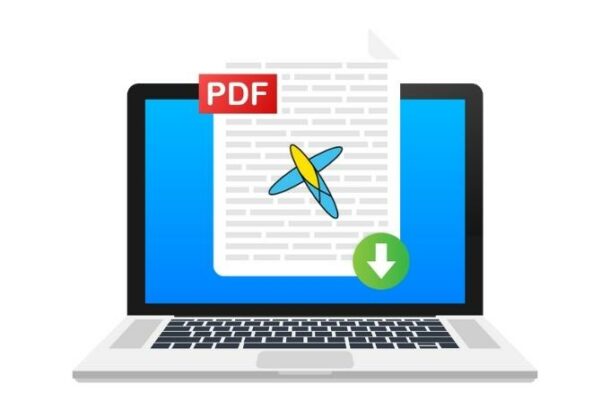by Krishna Chodipilli | Dec 10, 2020 | Agile Coaching
Listening is a vital role in coaching, agile mentoring, counselling, therapy and many other lines of work. Everybody talks about how important it is to actively listen; but it is alarming, how little we think about it and listen. How often are we implementing true listening skills? Do levels of listening (LOL) exist?
Listening to Coaching
There is much more to listening than simply hearing words; including the other things, we’re doing when we’re listening to someone. There are a few types of listening when engaged in a conversation at any point in time. As listeners if we become aware of what type of listening we are engaging in and if it is suitable for the task at hand, it would considerably change our effectiveness.
Most of us would like to believe that we are good listeners, and we feel so most of the time. There are times when listening isn’t as easy as we think it to be and we are not listening. For instance, we have emotions that tend to get in the way of active listening. This particularly happens when an individual is angry or stressed. But when are we ready to listen?
As a coach, you should be able to listen to what is being said, but also be cognizant of what is not said. One should learn and know how to use open and powerful questions to create an engaging conversation. A few examples of powerful questions are:
- What would you like to achieve from this session?
- Who can help you achieve this?
- What does it feel like?
- What are your other options?
- What have you tried so far?
Using this approach, one can improve their listening skills significantly. One should be comfortable with the silence that comes along with it too. This silence is also a crucial aspect as it allows the speaker to reflect on what is being spoken of. The combination of powerful questions and reflection can considerably result in invaluable insight and progress.
Listening Situations
Listening occurs in a discussion with an individual or a group of people. It could be family, friends, colleagues or even a stranger where you may find yourself in the level 1 of listening. As we go further, we will be discussing the 3 different levels of listening.
The Dilemma
Communication involves one person sending a message through words and/or actions, and another person that receives it. But what happens when the other individual is not listening? If level 2 & 3 of listening are not being imparted it causes misunderstanding and frustration amongst the individuals, and agreements don’t get completed. More often than not, it is due to the other person not actively listening.
Listening Skills
Lack of listening can severely compromise a conversation; it gets even more evident when it occurs in a formal and intimate relationship. The various levels of listening that we display in our conversations are
Level 1 – Internal Listening
Have you ever been in a situation where another individual is talking to you and you find your mind drifting to other thoughts; thoughts which are usually not anywhere related to the conversation at hand? It could be a situation where your boss is talking to you about the agenda for the day. You are physically present in front of him/her, but mentally your mind may be wandering far away. For example, “Did I turn off the stove at home?” or “What should I do after work?”. This is referred to as Internal Listening. The listener is there but has his or her focus on themselves and their thoughts rather than the speakers. To be a good coach or listener, this is not the level of listening to you should be engaging in; after all, it is about the about individual talking and his/her needs, and not yours.
Level 2 – Focused Listening
Focused listening is when the person listening is focused on the individual talking and picking up on what is being said, and he/she is physically and mentally present in the conversation. You are creating a connection with the individual talking and are aware and present of the environment you are in. You don’t find yourself getting distracted or thinking about yourself, but instead, you are thinking about them and making the conversation with them and can derive more value from it.
As a listener, you are giving your full attention and asking questions about how they feel about the situation, what they did, and offering advice etc. If you think back to a situation where you were listening to an individual with all your attention, you will see that your body language is refined and you find yourself maybe nodding along to the conversation (mirroring) and maybe asking more questions and being physical, mentally & emotionally present.
Level 3 – Global Listening
At this level, you can observe what you see, hear, smell, feel; as well as the emotional aspect (Visual, Auditory, Kinesthetic). It is also referred to as environmental listening. For example, your friend is talking to you about her awesome vacation that she returned from and listening to her you almost feel like you are there yourself and experiencing the emotions your friend had.
Global Listening is all about giving your complete attention to the individual talking. All your senses are alive and kicking. You find yourself able to channel all your focus to the speaker. You pick up more on what is being said, and you pick up emotions, body language etc.
Key areas where it is implemented
- One to one coaching sessions
- With family at home
- Leaders that work with teams
- Standups
- Retrospectives
- Backlog maintenancea
Pros & Cons
The advantage of implementing level 2 and 3 of listening is that there is clearer communication and a peaceful environment with individuals and teams. There is a higher level of openness and an increased level of comfort.
There isn’t any negative impact to using these levels, except for an individual remaining in level 1 listening.
Conclusion
At Leadership Tribe, our coaches and trainers shall pace with you to achieve significant listening skills and enable you to engage more powerfully with people in your professional and personal space. Learn more by connecting with us or drop in a message to let us know on areas you need us to work upon.
It takes patience, practice and time to master the art of listening. Implementing level 2 & 3 of listening will certainly improvise your effectiveness as a coach, leader, mentor or just as an individual. There will certainly be times when you may fall back to level 1 of listen. That’s ok, but when you realize that is happening, ensure to return to level 2 & 3.
by Krishna Chodipilli | Dec 10, 2020 | Agile Coaching, Leadership And Management
Handling impediments in an organisation could prove to be an arduous task as you have to sometime shake the hierarchy to make changes in practices that are causing the slowdown. However, being an Agile leader, you have to control and address such impediments in a highly efficient manner to avoid any discomfort or inconvenience to stakeholders. In this article, we will share the methods as to how a manager can effectively handle organisational impediments. Let us first focus on what an impediment is.
Organisational Impediments
An impediment is anything that hinders or disrupts the established pace of the team. It could be in any form and can occur anytime in an organisation.
How to handle Impediments
Handling impediments need constant surveillance and focus. However, new-age management technology has created a breakthrough process known as Scrum. Introduced in modern organisational culture, it has proved itself to be highly effective in handling unforeseen impediments that arise in the workspace. The following steps serve as checkpoints to address this organisational challenge.
Recognize the Impediment
The most important task in handling impediments is recognizing and mapping recurring impediments in the organisation. You have to be extremely careful while choosing the problems to get fixed. As most of the time, we do not pay attention to whether the issue is worth addressing or not. Recognition of the actual problem is extremely significant to find relevant solutions.
Understand the Issue
After recognizing the problems to address, the next step in to get a complete understanding of how the particular issue is affecting the overall working of a team. Usually, we do consider that a particular issue is slowing down the processes and overall efficiency of the organisation, however, fixing the exact cause would be most beneficial.
Finding Solutions
Finding the solution could prove to be an uphill task. It would always be wise to brainstorm the issue to elicit a variety of ideas and solution from within the team. Being an Agile Leader your task is to not only coach the Agile team but to also take everyone on board. Moreover, you have to keep this in mind that such solutions should not only effective but also efficient in the long run.
Implementing Solutions
By far the most difficult task of being an Agile coach is to implement solutions to address impediments. An Enterprise Agile coach tends to implement the solution in a manner which does not cause any kind of conflict or dysfunction in an organisation.
Most of the time the implementation of a sudden solution can draw adverse criticism from within the Agile group and thus cause dysfunction. Being a Leader and a Coach, it is your responsibility to handle such impediments and the affected people with due responsibility and utmost care.
Handling impediments need patience, expertise and experience. The organisation is expecting its Agile Leaders to deliver on this score by pointing out adverse situations and organisational loopholes and presenting practical solutions to mitigate and eradicate them from the system in the shortest time frame.
by Krishna Chodipilli | Dec 10, 2020 | Agile Coaching, Leadership And Management
Soon we shall be celebrating our nation’s Independence Day once again. A day to remember and commemorate the sacrifices made by our martyrs and the struggle thereon to liberate ourselves from a foreign rule.
While we remember our great leaders and pay homage to their astute contribution in giving us the freedom that we celebrate, let us also remember the countless others who supported the cause. Whose wholesome participation and selfless intent created the mass uprising the world shall ever witness. Faceless, unheard and unsung. Were they, not leaders? Were they not equally important in the outcome of the independent movement? Who were these people?
The answer to these questions is as simple as it is profound in its existence. They were simple, homely, peace-loving citizens. Mere farmers, bookkeepers, peons, traders and factory workers. Citizens with common dreams, aspirations and a passion to live a life free of subjugation and penury. Choosing to live a life of free will and individual choice. They detested their past and regretted their present, but that did not relent nor deter them from altering the future. They invested in a future that became our present. Creating a nation from their bold actions that boast itself as the largest surviving democracy today!
Leaders are not necessarily famous and popular. Leaders need not have followers who do what the leader says. Leaders are also not those who get to envision, influence and move masses. Leadership is an existential trait all humans possess. It is the essence of social life. Every human being is a leader, chartering his own story on the evolutionary journey of mankind. Just like our forefathers whose display of unflinching loyalty and commitment to the cause for ‘Poorna Swaraj ‘ brought forth a new nation on August 15, 1947, we too should realise that there lies a latent leader in all of us. A leader who shall rise to resist anarchy and social mayhem. A leader who stands for the preservation of his nation’s culture and heritage. A leader who protects himself and his people from the effects of a dysfunctional and threatened society.
Let us also believe just like those who lived before us, that we shall live a life of free will and abundance of choice. Where the mind is free to think and express. Where life is lived in opportunities and discovery. Let us believe in the leader in us, not bound by fear or doubt. Free from manipulated opinions and selfish agendas. Independent from biases and influence. We are all leaders. Leaders of a nation that was created from the cradle of Servant Leadership, where we live and let live.
Our country is truly independent when each Indian is independent in thought, aspiration and commitment. Free from the perils of a delinquent society. Free from the trappings of the fragmented cause. That will happen when every Indian realises that he is a leader within, someone who can make the difference that he wishes to see around him. The true torchbearer of a legacy earned by spilling blood, sweat and tears. Let us not wait to follow, let us not wait for leaders to show us the way. Instead, this Independence Day, let us bring forth the leader in each of us, to lead ourselves and our great nation into a more vibrant and enlightened tomorrow.
Unfortunately, there is no certification program in the world which can create or change a person into a leader overnight. As a Colonel from the Indian Army, I shall share with you a secret which will make the leader in you emerge.
Just take an Action which would help you and others around you.
Emerging the leader in us and creating leaders around us is the true essence of nation-building. There can be no other cause more patriotic than this. I have been part of Leadership-Tribe helping co-create leaders. What is stopping you from taking the first step in discovering the leader in you?
by Krishna Chodipilli | Dec 10, 2020 | Leadership Tribe
Traditional digital marketing methods require months of planning and tedious efforts for promoting the business and achieve a high conversion rate. Sometimes there will be instances where the plans that were made initially during the digital marketing process will be rendered redundant by the time they get executed. A complex and month-long digital marketing process will not only eat your time but there is a bigger risk of facing failure. The answer to overcoming this challenge is ‘Agile Marketing’, which is a more dynamic and systematic way of digital marketing.
What is Agile Marketing?
Agile marketing is working out the given project into smaller plans or chunks and achieving each one of them in minimal time frames of a week or two weeks called ‘Sprints’. It can also be termed as an effort based on data and analytics to source opportunities or solutions to problems, conducting tests, evaluating results and implementing decisions.
Some business organizations think that they are Agile because they follow stringent test methodologies or depend on cross-functional teams. But this is not true as ‘Agile Marketing’ requires adopting Agile methodologies completely throughout the process. The marketing department might not have the necessary coordination with the IT Department or the Finance Department or the Legal Department, which hinders the Agile process. The technology partners or the agency might not be in sync with the speed required for Agile processes. Hence, a company should have all the necessary infrastructure and facilities for conducting the entire Agile marketing process for improved business results.
Prerequisites for an Agile Marketing team are:
- The organization needs to focus on what needs to be achieved by using Agile marketing techniques.
- Should have ample data and analytics and the right type of marketing technology infrastructure to support Agile marketing.
- Senior market leaders of the organization should extend complete support to the shift towards Agile methodologies as there may be inevitable resistance.
- Depending on the outcome expected from the Agile marketing team, its team members must be specialists in multiple functions, available round the clock, must be highly skilled, fast and are expected to have a host of other dynamic qualities.
- This Agile team must have proper communication with other groups in the organization and should be able to reach them quickly.
Most Marketers avoid Agile methods because:
- The organization might lack the necessary infrastructure to support Agile methodologies.
- Employees may not have any training or knowledge regarding Agile processes.
- Higher management may be too wary of trying a new approach.
- Current methodologies might be working well according to the organization and the employees are not willing to accept anything new.
- Lack of time is a major constraint which prevents the organizations from adopting new agile techniques.
PROCESSES INVOLVED IN AGILE MARKETING ARE:
Adopting an Agile culture
The first thing that the Agile marketing team will do is preparing itself for embracing the Agile culture. There is no room for delay and speed is something that matters the most. A high level of collaboration is expected from the team members and the usual ‘day to day hushing up’ is not entertained. Making decisions depending on solid data, working to attain simplicity and high level of accountability are the virtues that are encouraged among the team members.
Give results by analyzing data
Vast amounts of user data are collected through various channels in a business organisation. In the next step, the Agile team analyzes these large amounts of data to skim useful insights, key advantages, weak points, issues, and opportunities. Each member of the team should give effective reports regarding the tasks that the member is going to do the next day and should educate the team manager regarding how much is achieved from the previous day’s promise list. This method helps the team to achieve targets faster and get the desired results.
Arriving at Hypothesis
When analyzing the data and identifying the problems and issues, the team devises ways to improve the experience or solve the problem. Each such hypothesis is subjected to testing in order to derive key performance indicators. Once all the probable tests are conducted the ideas are divided into two categories namely ideas having high business impact and ideas that are easy to implement. High priority ideas are pushed to the top of the list for immediate execution for a stronger and positive business impact.
Change the course of action
The Agile team runs the project in sprints (a cycle of one or two weeks) and tests the entire process for any loopholes. It analyzes whether an offer on a particular product segment is working or not and whether a call to action is bringing in the necessary conversions or not and so on. At this stage, the team should operate with high efficiency and should have short and sweet meetings, which are to the point and should not curtail the speed of the team.
The various tests for arriving at fruitful results are conducted in sprints and after each sprint, the scrum master reviews the various tests for their outcomes. After analyzing them, the scrum master decides on scaling up the tests which have given fast & positive results and killing the tests with a negative outcome. At the end of each sprint, the agile team conducts a meeting to incorporate the lessons learned and inform the stakeholders regarding the results. The scrum master will prepare a contingency plan after each sprint to assimilate positives and discard negatives based on the results of each test involved in the process for the next sprint.
We can come to the conclusion that agile marketing method is the most polished, accurate and quick way of getting desired marketing results like increased conversion rates, brand recognition, and highest ROI.
Result-oriented approach
by Krishna Chodipilli | Dec 10, 2020 | Agile Coaching
Being an Agile coach is an onerous task, as you have to work with the people who are skilled enough to make their own decisions. In this article, we will discuss some of the tips that an Agile coach should apply to infuse a sense of high performance in an Agile team.
Instil A Purpose
The first important task is to make your team aware of the purpose and the goal of the Agile team spirit. An Agile team is made up of cross-functional teams from various departments so they tend to have different work environments, attitudes, aptitudes and orientations. A coach instils a common purpose that appeals to the team members, thereby getting each one of them on the same page before getting into the task of achieving goals.
Mutual respect
Another important factor that affects team performance is a culture of mutual respect. Being a coach you must not give the member an impression that you know each and everything about the team and they know nothing. Instead, create an environment where ideas flow easily and effortlessly without hesitation or reservation.
Introduce system thinking
Yet another highly effective coaching skill is to introduce system thinking practices in the group or the team. Motivate your team to conduct brainstorming sessions and to engage in root cause analysis. Most of the time, conflicts in teams are mostly because of internal pressures and misplaced perceptions. Working in collaboration may ease out work-related differences and thus enhance team performance.
Powerful questions
While coaching the Agile team you have to demonstrate your listening skills to come up with the best possible solutions and ideas. Ask the team questions regarding various situations and their relevant solutions. However, you have to keep in mind that asking too many questions may also put a question on your ability to solve the situation. So, indulge your team in solving the problems, however, do not ask too many questions.
Introduce an open environment
An agile coach needs to insulate teams from all kinds of disempowering influences that hinder its performance. Introduce an environment where every team member is allowed to express themselves on things that are causing discomfort and unrest. If the team feels that you are aware of their problems, they will be more willing to share their views and opinions with the coach, leading to mutual admiration and empathy.
Use Team Momentum
While working with teams, you have to distinguish between leading and controlling. A good leader always encourages teams to ideate and come up with the best possible answer to problems. If you encourage a team to decide on which problem it should on work first, it will instil a sense of responsibility leading to diligence and commitment to the tasks assigned.
Once a coach has trained his team members to work on their problems and to make their own decisions, they get to scale up to becoming scrum masters, thus paving their chartered course to success and glory.






